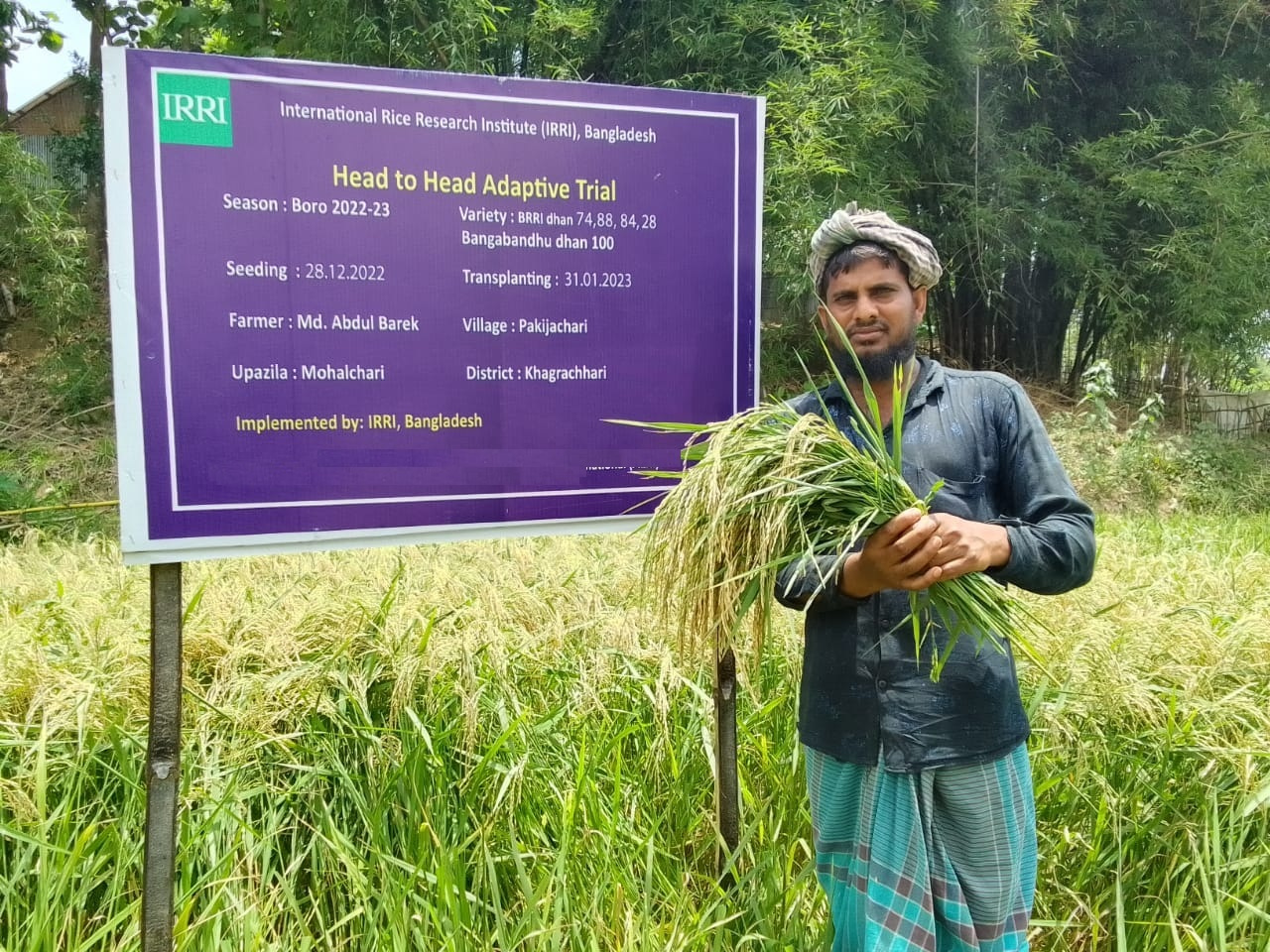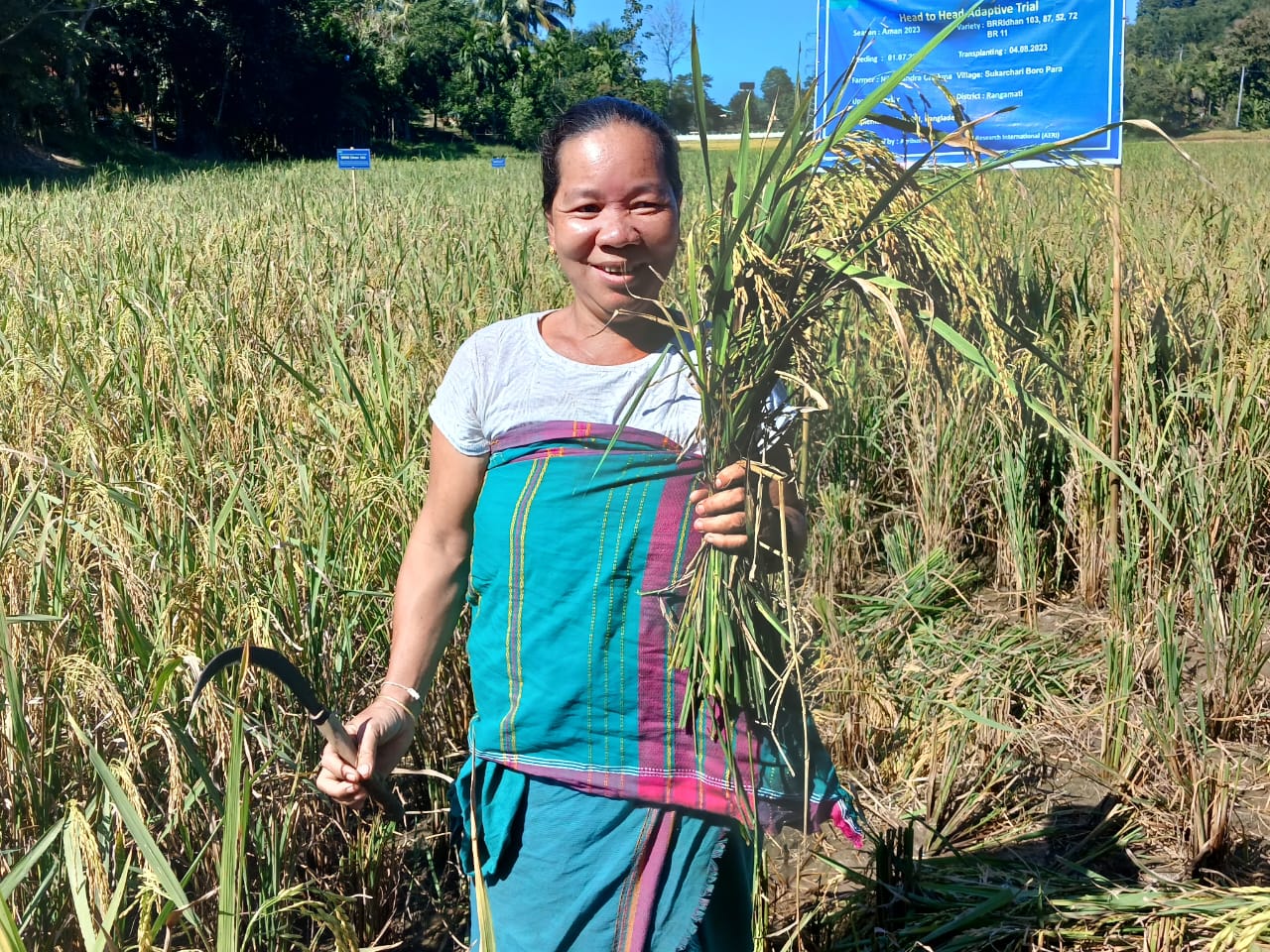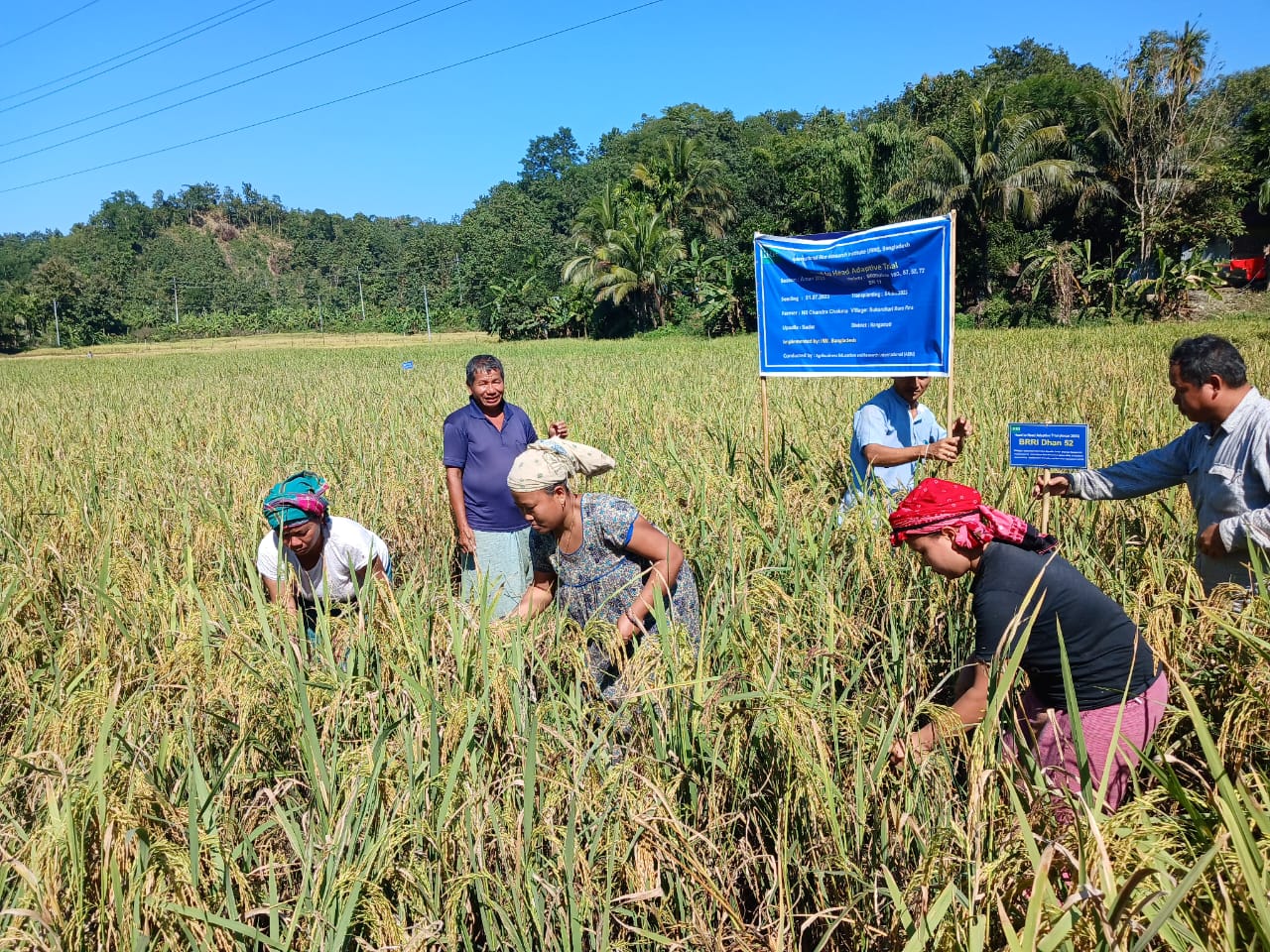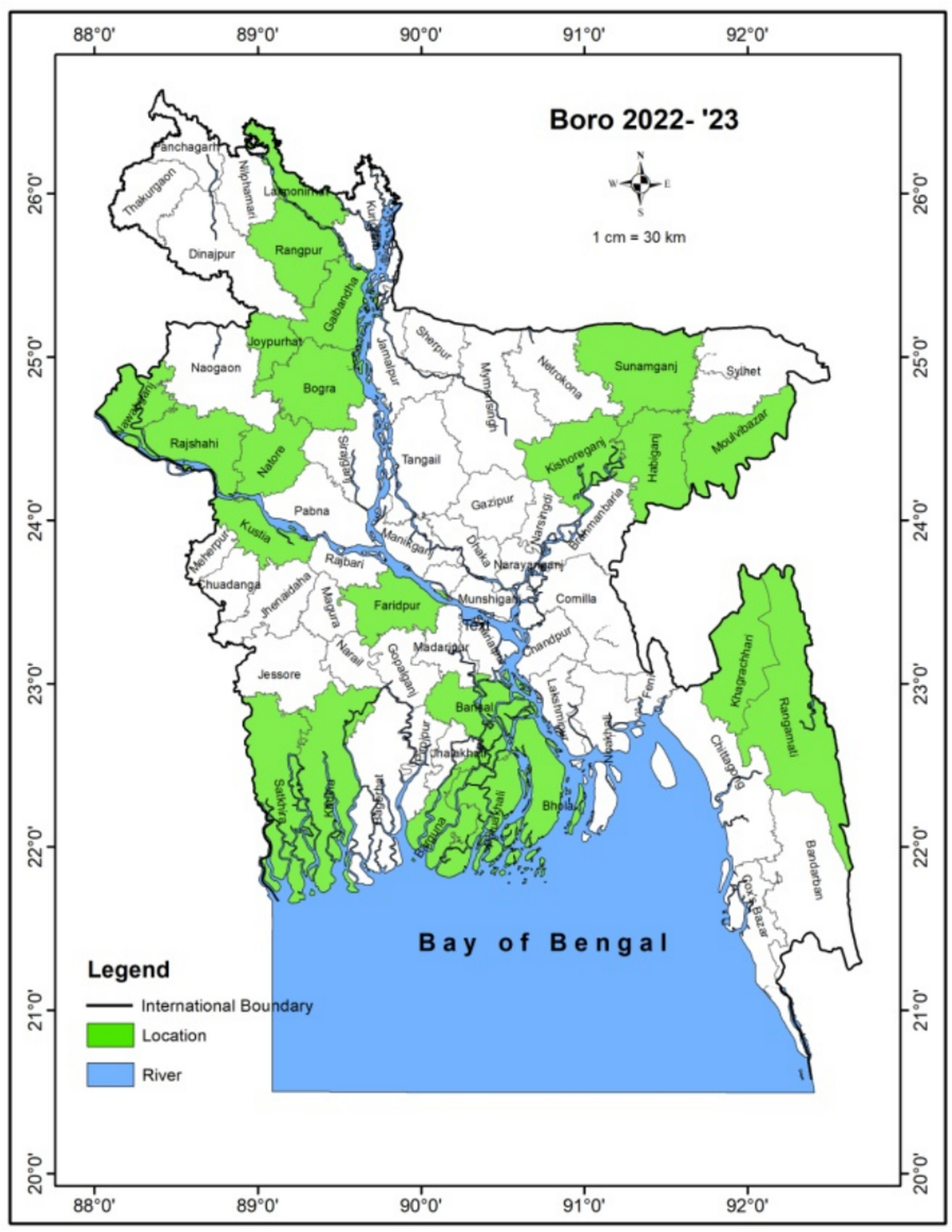Unlocking Farmers’ Satisfaction with High-Yielding Rice Varieties: Evidence from Bangladesh
Published in Earth & Environment, Research Data, and Sustainability


🌾 Finding My Voice as a Researcher: Sharing the Story Behind My Work on Agricultural Finance and Climate Resilience in Bangladesh
Every piece of research carries not only numbers, models, and graphs but also a story—a story of curiosity, struggle, discovery, and impact. For years, I focused on preparing manuscripts, running data analysis, and publishing in peer-reviewed journals. While publishing in journals like Springer is essential for academic credibility, I have learned that sharing the story behind the research is equally important. Platforms such as Springer Nature Research Communities provide an invaluable opportunity to do just that: bring our work beyond the academic paper and engage with a global community of researchers, policymakers, and practitioners.
Introduction: Why Share Research Stories?
Bangladesh’s farmers stand on the frontline of climate change, facing floods, irrigation shortages, and rising input costs. To ensure food security, high-yielding rice varieties (HYVs) are being promoted—but do they really meet farmers’ expectations?
In my recent publication in the Saudi Journal of Agricultural Sciences (Springer), I explored farmers’ satisfaction with HYVs under Head-to-Head Adaptive Trials (HHATs). Using surveys, factor analysis, and structural equation modeling, along with farmers’ own stories, we examined both the technical and institutional drivers of adoption.
Our findings show that farmers are highly satisfied with HYVs, mainly due to:
-
Agro-Technical Efficiency → better yield, seed quality, and less pesticide use.
-
Institutional Oversight → timely seed distribution, input management, and disaster support.
Yet, challenges remain: labor shortages, irrigation difficulties, and climate risks continue to threaten adoption.
This research highlights that technology alone is not enough—institutional support systems are equally critical. Strengthening both will help ensure food security, improve farmer livelihoods, and contribute to the SDGs.
In this blog, I want to share how I got involved, the journey behind my research on farmers’ satisfaction with high-yielding rice varieties (HYVs) in Bangladesh, and why telling these stories can make a difference.
The Motivation: Why Agricultural Finance Matters
Bangladesh is an agricultural country where more than 40% of the population depends directly on farming for livelihood. However, farmers face challenges: unpredictable floods, irrigation shortages, rising costs, and climate shocks. As a Lecturer in Agricultural Finance and Management at Sher-e-Bangla Agricultural University, my passion has always been to understand how financial access, technology adoption, and institutional support can improve the resilience of smallholder farmers.
The motivation behind my research on HYVs came from a simple but powerful question: Are farmers truly satisfied with these “improved” seeds, and what makes adoption successful? While policy documents often assume that higher-yielding varieties automatically bring benefits, I wanted to test this assumption directly with farmers.
The Research Journey: From Concept to Publication
Conducting this research was not a straight road—it was a journey full of steps, decisions, and learnings.
- Designing the Study
- I worked with Head-to-Head Adaptive Trials (HHATs), where traditional rice varieties and HYVs were tested side by side.
- Farmers were directly involved, providing both quantitative survey responses and qualitative reflections.
- Data Collection
- We surveyed over 200 farmers across Boro season cultivation areas.
- We asked about yield, seed quality, pest resistance, costs, and also about institutional factors like input distribution and disaster support.
- Analysis
- Reliability tests confirmed the questionnaire was consistent.
- Exploratory Factor Analysis (PCA) identified four possible themes.
- Confirmatory Factor Analysis (CFA) narrowed these down to two strong factors: Agro-Technical Efficiency (ATE) and Institutional Oversight (IO).
- Structural Equation Modeling (SEM) proved that ATE had the strongest influence (β = 0.684), followed by IO (β = 0.259).
- NVivo qualitative analysis revealed everyday struggles like labor shortages, flooding, and irrigation problems.
- Publication
- The results were published in the Saudi Journal of Agricultural Sciences (Springer, Q1, Scopus-indexed).
- This was a proud milestone—not just for me personally, but for our Department and University.
What We Found: Beyond the Numbers
Our findings were both encouraging and sobering.
- Farmers were largely satisfied with HYVs. Mean scores above 4 out of 5 showed strong acceptance.
- Technical performance mattered most. Yield improvement, better seed quality, and reduced pesticide needs were the strongest drivers of satisfaction.
- Institutions also played a big role. Timely seed distribution, disaster forecasting, and input support influenced satisfaction—though less strongly than yield.
- Challenges remained. Farmers still reported struggles:
- Labor shortages (20.7%)
- Flooding (13.6%)
- Irrigation issues (11.4%)
- Concerns over grain quality
This mix of optimism and concern highlighted an important truth: technology alone cannot solve problems; institutions and policies must work hand-in-hand.
Why Share This Story?
Now you may ask: why not just stop at the journal article? Why write here?
The answer is simple. Journals reach academics, but communities reach people—peers, policymakers, students, and development workers who can put findings into action. By sharing my story in Springer Nature Research Communities, I can:
- Increase visibility → more people will learn about Bangladesh’s agricultural challenges and successes.
- Attract collaboration → researchers from other regions facing similar issues may connect.
- Bridge research and policy → policymakers often prefer accessible stories rather than dense statistical models.
- Inspire young researchers → telling the “human side” of research encourages students to see value in rigorous but applied work.
How I Got Involved with Research Communities
Getting involved was easier than I thought:
- I created my profile on Springer Nature Research Communities, adding my ORCID, short bio, and research interests.
- I joined relevant communities: Agricultural & Food Science, Economics, and Climate & Sustainability.
- I shared my first post summarizing my Springer publication—short, readable, with one figure.
- I started reading other researchers’ posts, leaving comments, and following those in similar fields.
Very soon, I noticed that my post received views, likes, and even inquiries for collaboration. It felt rewarding to see the research travel beyond the closed walls of academia.
Impact: From Local Fields to Global Dialogues
The most powerful impact of sharing my story has been connections. Researchers from other South Asian countries reached out to compare HYV adoption experiences. Development organizations contacted me about data for policy briefs. Even students from my own university felt inspired and asked how they could join research communities.
This confirmed that sharing multiplies impact. A research paper is one seed; sharing its story allows it to grow into many conversations, projects, and applications.
Looking Ahead: Expanding the Story
Moving forward, I want to use Springer Nature Communities not only to share findings but also:
- To start policy-focused discussions on agricultural finance and climate change adaptation.
- To invite collaborations for cross-country comparative studies.
- To highlight the voices of farmers themselves—bringing their perspectives into global conversations.
- To mentor students by showing them how to turn research into accessible stories.
I would be delighted to connect with other researchers, practitioners, and policymakers working on agricultural finance, climate adaptation, and sustainable food systems. Collaboration and dialogue are key to scaling these findings beyond Bangladesh.
📩 Feel free to reach out or share your perspectives!
Md. Masudul Hassan
Lecturer, Department of Agricultural Finance and Management
Sher-e-Bangla Agricultural University, Dhaka, Bangladesh
https://link.springer.com/article/10.1007/s44447-025-00047-2



Follow the Topic
-
Journal of the Saudi Society of Agricultural Sciences

This is an English language, peer-review scholarly publication which publishes research articles and critical reviews from every field of Agricultural sciences and plant science.
What are SDG Topics?
An introduction to Sustainable Development Goals (SDGs) Topics and their role in highlighting sustainable development research.
Continue reading announcementRelated Collections
With Collections, you can get published faster and increase your visibility.
Artificial Intelligence and Robotics in Sustainable Agriculture
The integration of artificial intelligence (AI) and robotics in agriculture has emerged as a transformative force, driving innovation and efficiency in farming practices. As global challenges such as climate change, population growth, and resource scarcity intensify, the agricultural sector is increasingly turning to advanced technologies to optimize productivity and sustainability. This Collection aims to gather research that examines the application of AI and robotics in various aspects of agriculture, including precision farming, water productivity, water use efficiency, crop and water management, and resource allocation, ultimately contributing to a more resilient food system.
The significance of this research lies in its potential to address critical issues such as food security and environmental sustainability. Recent advances in machine learning, computer vision, and agricultural robotics have demonstrated the ability to enhance crop yield prediction, monitor plant health, and automate labor-intensive tasks. These innovations not only improve efficiency but also reduce the environmental footprint of farming practices, paving the way for sustainable agricultural solutions that can meet the demands of a growing global population.
Looking to the future, continued research in this field may lead to breakthroughs that further enhance agricultural productivity while minimizing resource use. As AI and robotics technologies evolve, we can anticipate the development of more sophisticated decision support systems that enable farmers to make data-driven choices, optimize operations, and adapt to changing environmental conditions. Such advancements have the potential to revolutionize the agricultural landscape, fostering a new era of smart farming that aligns with sustainability goals.
This Collection supports and amplifies research related to SDG 2 (Zero Hunger).
Publishing Model: Open Access
Deadline: Apr 30, 2026




Please sign in or register for FREE
If you are a registered user on Research Communities by Springer Nature, please sign in